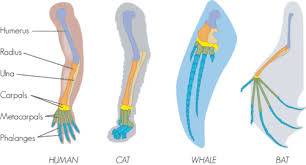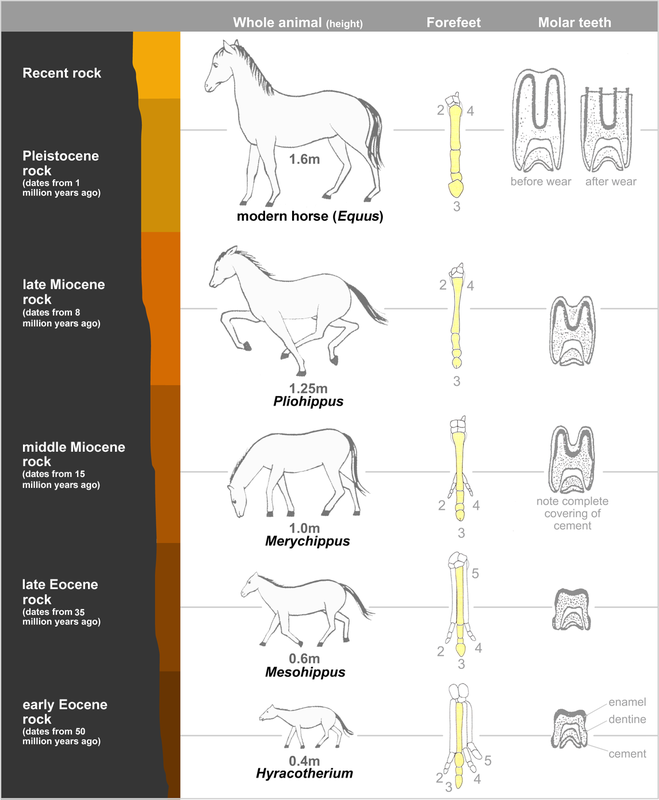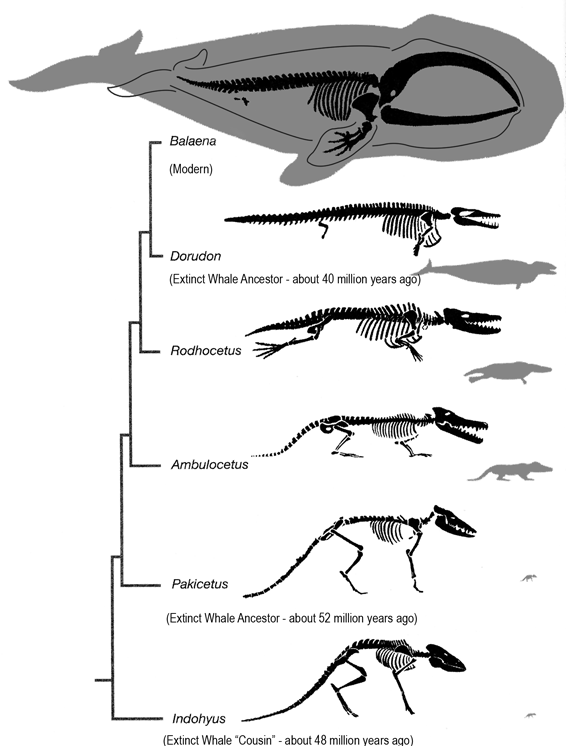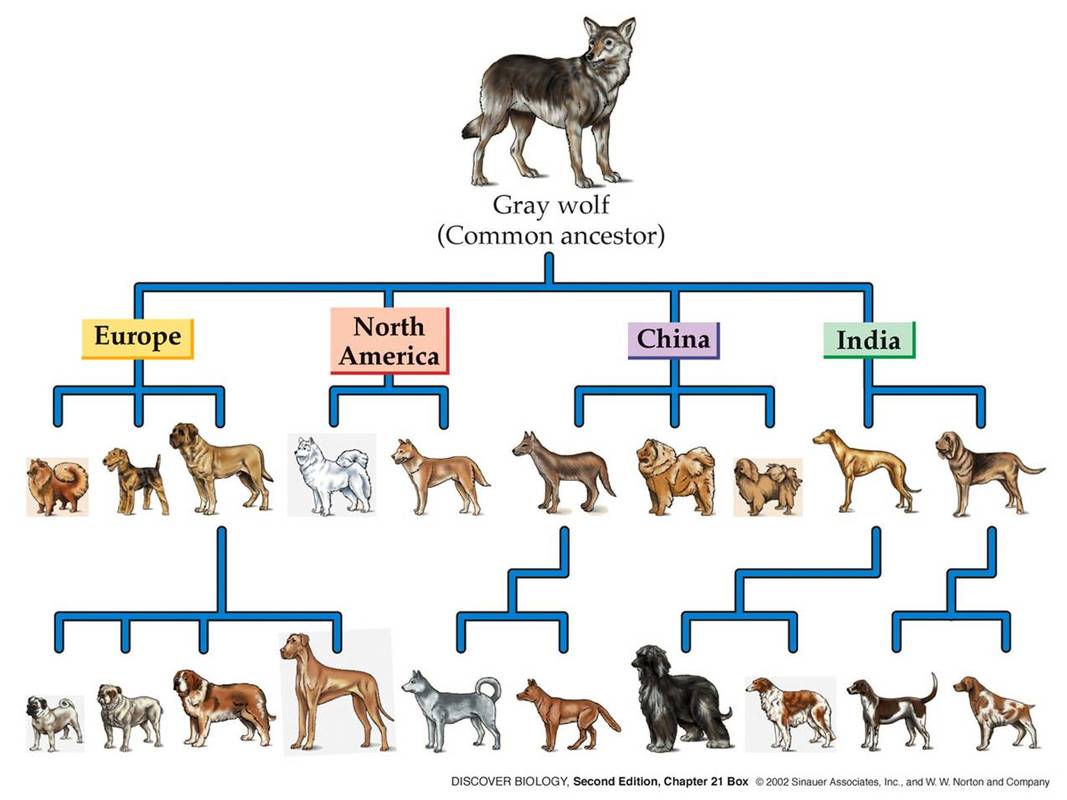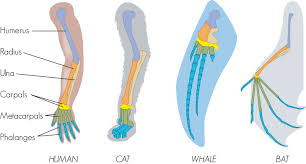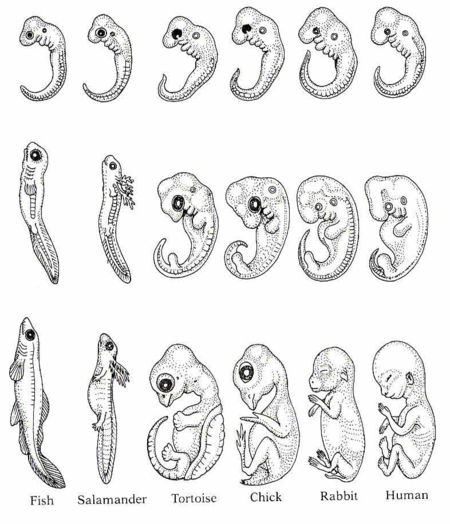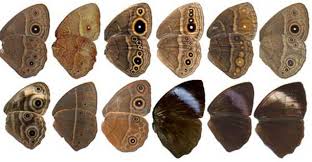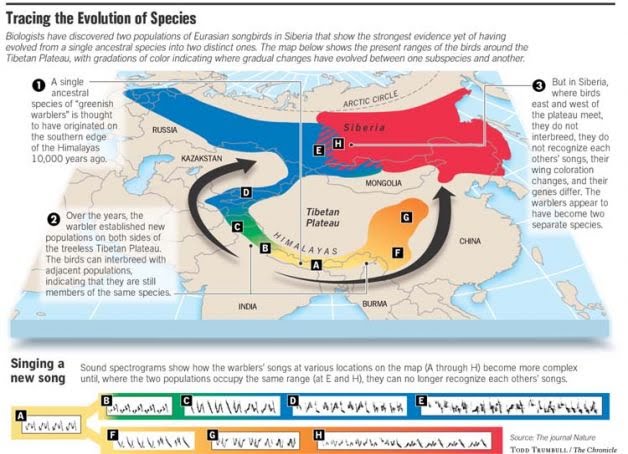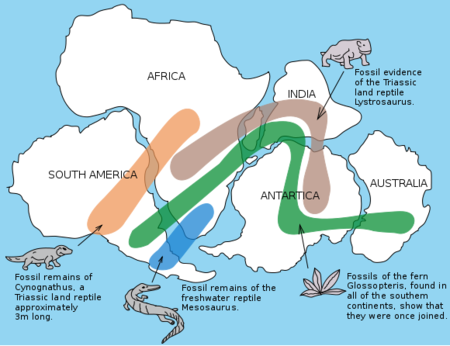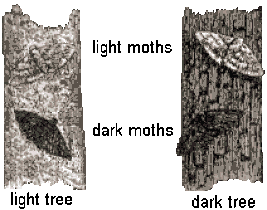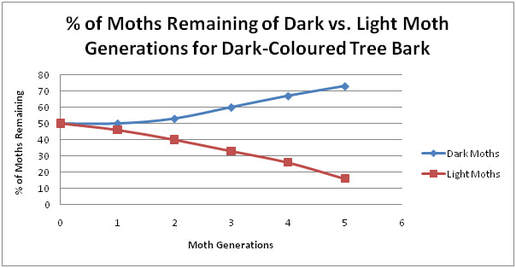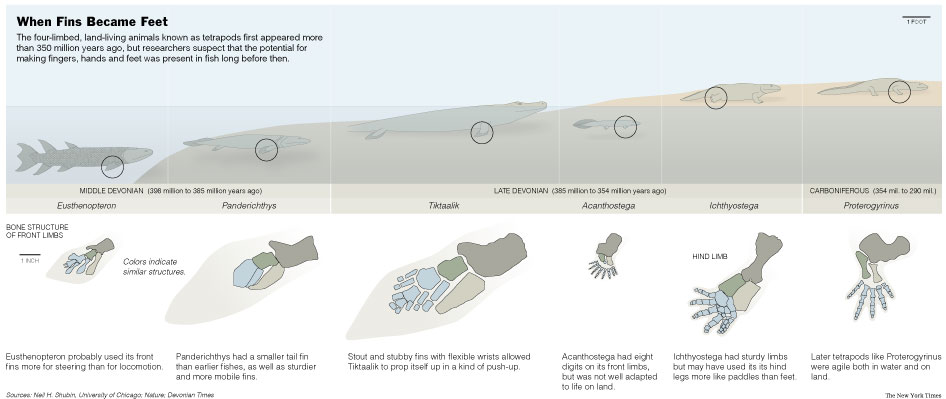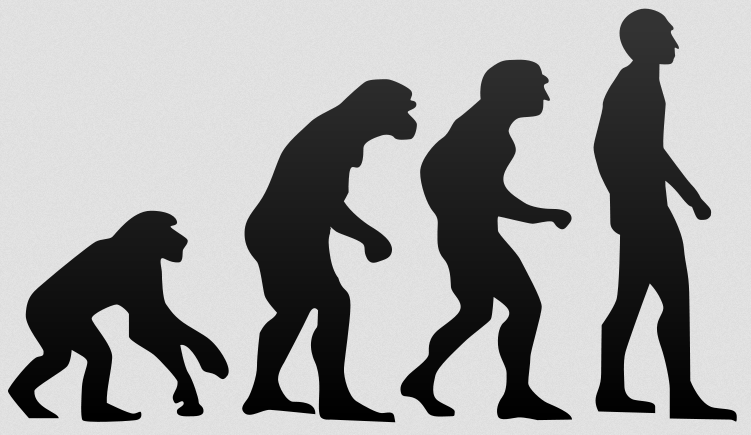- IB Style Question Banks with Solution
- IB DP Biology SL- IB Style Practice Questions with Answer-Topic Wise-Paper 1
- IB DP Biology HL- IB Style Practice Questions with Answer-Topic Wise-Paper 1
- IB DP Biology SL- IB Style Practice Questions with Answer-Topic Wise-Paper 2
- IB DP Biology HL- IB Style Practice Questions with Answer-Topic Wise-Paper 2
5.1 Evidence for Evolution
Essential Idea:
There is overwhelming evidence for the evolution of life on earth
Understandings:
- Evolution occurs when heritable characteristics of a species change
- The fossil record provides evidence for evolution
- Selective breeding of domesticated animals shows that artificial selection can cause evolution
- Evolution of homologous structures by adaptive radiation explains similarities in structure when there are differences in function
- Populations of a species can gradually diverge into separate species by evolution
- Continuous variation across the geographical range of related populations matches the concept of gradual divergence
Applications:
- Development of melanistic insects in polluted areas
- Comparison of the pentadactyl limb of mammals, birds, amphibians and reptiles with different methods of locomotion
- Define evolution.
- Define strata and paleontology.
- Explain three pieces of evidence that fossils provide that evolution has occurred.
- Use an example to explain how selective breeding has lead to evolution in a species.
- Explain the process of artificial selection using selective breeding.
- Contrast analogous structures and homologous structures.
- Contrast convergent evolution and adaptive radiation.
- State an example of analogous structures.
- State an example of homologous structures.
- Define vestigial structure.
- State an example of a vestigial structure.
- Describe the process of gradual speciation.
- Explain how continuous variation across geographical ranges is evidence of evolutionary change.
- State an example of recognizably different populations of the same species across a geographical range.
- Define pentadactyl limb.
- List the bone structures present in the pentadactyl limb.
- Identify pentadactyl limb structures in diagrams of amphibians, reptiles, birds and mammals.
- Relate differences in pentadactyl limb structures to differences in limb function.
- Explain how natural selection leads to changes in the melanistic variety of insects in polluted areas.
- Propose a mechanism that explains the pattern found in vertebrate limb structure yet allows for the specialization of different limb functions.
Topic 5.1 evidence for evolution
In the Evidence for Evolution unit we look at look at how time and many generations change the genetic make-up of species as they become adapted to new surroundings or altered conditions. One result of these changes may be the evolution of new varieties and species.
The unit is planned to take 2 school days.
Essential idea:
- There is overwhelming evidence for the evolution of life on Earth.
Nature of science:
- Looking for patterns, trends and discrepancies—there are common features in the bone structure of vertebrate limbs despite their varied use. (3.1)
- Propose a mechanism that explains the pattern found in vertebrate limb structure yet allows for the specialization of different limb functions.
5.1.U1 Evolution occurs when heritable characteristics of a species change. (Oxford Biology Course Companion page 242).
- Define evolution
Evolution at its most fundamental level simply describes a change over time. In living organisms this change refers to the heritable characteristics of a species (biological evolution)
- When heritable characteristics of a species or a biological population change over successive generations
- These traits cannot be acquired over a lifetime, they are heritable traits or alleles in an organism’s DNAthe cumulative change in the heritable characteristics of a population, or
- Evolution is the change in allelic frequency in a gene pool of a population over time, as a result of natural selection, genetic drift, gene flow, and mutation pressure.
5.1.U2 The fossil record provides evidence for evolution.
- Define strata and paleontology.
- Explain three pieces of evidence that fossils provide that evolution has occurred.
Something provides evidence for evolution when it demonstrates a change in characteristics from an ancestral form. The fossil record provides evidence by revealing the features of an ancestor for comparison against living descendants.
A fossil is the preserved remains or traces of any organism from the remote past. The preserved remains (body fossils) provide direct evidence of ancestral forms and include bones, teeth, shells, leaves, etc. Traces provide indirect evidence of ancestral forms and include footprints, tooth marks, burrows and faeces (coprolite). The totality of fossils, both discovered and undiscovered, is referred to as the fossil record. The fossil record shows that over time changes have occurred in the features of living organisms (evolution)
Fossil Record
- Fossils are the preserved remains of animals, plants, and other organisms from the past.
- The fossil record shows the gradual change of species over time.
- The timeline in which fossils appear are what scientists would expect, with bacteria and algae being the oldest in the fossil record. Followed later by shelled animals and trilobites, then dinosaurs and early reptiles, birds and mammals later still.
- Many fossil sequences link together present day organisms with their likely ancestors. For example present day horses and zebras are closely related to tapirs and rhinos, which are all linked back to the Hyracotherium, an animal similar to the rhinoceros
- Whale evolution fossil record is also whale documented
Reliability of the Fossil Record
- Interpretation of fossil record based on differential preservation, i.e., some organisms have not been found or some locations provide necessary conditions for fossilization while other areas do not
- Bias present since not all areas of the globe have been searched for fossils, e.g. Central Asia, due to inaccessibility
- Small number (e.g. one or two) of fossils found for a species so not sure if that is a typical or atypical representation
- Gaps of time or “missing links” still exist in the fossil record
5.1.U3 Selective breeding of domesticated animals shows that artificial selection can cause evolution.
- Explain the process of artificial selection using selective breeding.
- Use an example to explain how selective breeding has lead to evolution in a species.
Selective breeding is a form of artificial selection, whereby man intervenes in the breeding of species to produce desired traits in offspring. By breeding members of a species with a desired trait, the trait’s frequency becomes more common in successive generations. Selective breeding provides evidence of evolution as targeted breeds can show significant variation in a (relatively) short period
- Breeding plants and animals for specific genetic traits.
- Shows a good record of recent changes in genetic characteristics over a few dozens of generations that man has selected to breed.
- For example, chickens that produce more eggs or cows that produce more milk are selected to breed, hopefully passing these traits onto next generations.
- Plants can be bred in a similar manner based on useful or beneficial characteristics breeders would like to see in the next generation of plants.
- The evolution of domesticated dogs has produced many different breeds through artificial selection
5.1.U4 Evolution of homologous structures by adaptive radiation explains similarities in structure when there are differences in function.
- Contrast analogous structures and homologous structures.
- Contrast convergent evolution and adaptive radiation.
- State an example of analogous structures.
- State an example of homologous structures.
- Define vestigial structure.
- State an example of a vestigial structure
Comparative anatomy of groups of organisms may show certain structural features that are similar, implying common ancestry. Anatomical features that are similar in basic structure despite being used in different ways are called homologous structures. The more similar the homologous structures between two species are, the more closely related they are likely to be.
Homologous structures: vertebrate embryos and the pentadactyl limb.
- homologous structures: various different structures sharing the same fundamental plan
- derived from a similar embryonic origin
- variations on the basic structure allow different functions
- adaptive radiation = permitting exploitation of different ways of life
- suggests divergence from a common ancestor
- common ancestor was a land animal e.g. shrew, with short five-toed limb with not specific specialization
- Modern mammal species evolved by modification of limbs to a wide variety of habitats
- Habitats can be terrestrial, aquatic and air
- i.e. running (horse) digging (moles), flying (bats) swimming ( whales) and grasping (monkey)
5.1.U5 Populations of a species can gradually diverge into separate species by evolution.
- Describe the process of gradual speciation.
Within a population of any given species there will be genetic variation (i.e. variation which is inheritable). Typically this variation will be continuous and follow a normal distribution curve as the rate of change is gradual and cumulative
- Within a population there is genetic variation
- If two populations of the same species become separated so that they do not reproduce or interbreed because they become separated by geographical boundaries; for example one group migrates to an island or they became separated by a mountain range, then natural selection will act differently on those two separate populations
- Over time, these populations change so that they are recognizably different and can or do not interbreed if they were to merge together again
5.1.U6 Continuous variation across the geographical range of related populations matches the concept of gradual divergence.
- Explain how continuous variation across geographical ranges is evidence of evolutionary change.
- State an example of recognizably different populations of the same species across a geographical range.
The degree of divergence between geographically separated populations will gradually increase the longer they are separated. As the genetic divergence between the related populations increase, their genetic compatibility consequently decreases. Eventually, the two populations will diverge to an extent where they can no longer interbreed if returned to a shared environment. This process is called speciation
- When populations diverge over time and are separated, one would expect these populations to be in different stages of variation or divergence and not all separate distinct organisms right away or all the same unchanged species
- Darwin gave many of these examples that showed populations that are slightly different, but are not clearly separate species
- Examples of this are the Lava lizards and finches of Galapagos, and the Spiny Sticklebacks of BC
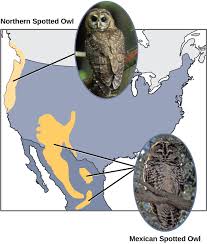 | 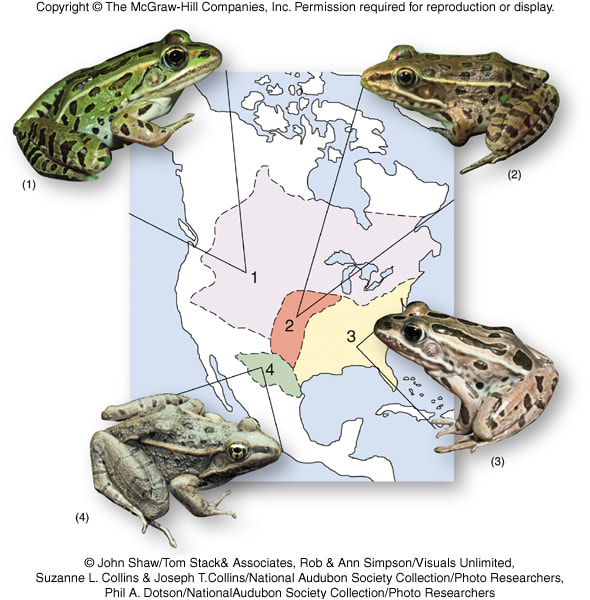 |
Biogeography is the study of species distributions. It examines how species have been distributed across different places at different times. The distribution of species shows a very clear pattern. More similar species tend to be found closer to one another geographically. The distribution of many animals and plants across different continents can be explained by continental drift (the movement tectonic plates).
The continents were once all joined together in one giant super-continent. About 200-180 million years ago the southern half called Gondwanaland broke away. This would later split into what we now know as Antarctica, Africa, Australia, South America and India.
5.1.A1 Development of melanistic insects in polluted areas.
- Explain how natural selection leads to changes in the melanistic variety of insects in polluted areas.
Peppered moths (Biston betularia) exist in two distinct polymorphic forms – a light colouration and a darker melanic variant
- In an unpolluted environment, the trees are covered by a pale-coloured lichen, which provides camouflage for the lighter moth
- In a polluted environment, sulphur dioxide kills the lichen while soot blackens the bark, providing camouflage for the dark moth
In pre-industrial revolution tree trunks in forests around major cities were light grayish-green due to presence of lichens. Most peppered moths in area are light colored with dark spots. Prior to 1850, no dark (melanic) form of moth was ever collected.
In post industrial revolution tree trunks in forests become dark due to covering with soot. (i.e. coal-based industries). After 1850, dark form of peppered moth were collected. Over the next 45 years, dark forms of moth became more common.
Melanic form of moth accounts for 95% of peppered moth population around many industrial cities in England. The mottled form accounts for largest percentage of population in non-industrial areas. This evidence shows that both formes of the peppered moth existed in the population. Brds prey upon both forms of moth when resting on tree trunks. The increase of one form over the other form (e.g. dark over light) due to bird predation (i.e. selective pressure) is an example of natural selection. Increased prevalence of melanic form of peppered moth during the Industrial Revolution is an example of a directional selection following a change in environmental conditions.
5.1.A2 Comparison of the pentadactyl limb of mammals, birds, amphibians and reptiles with different methods of locomotion.
- Define pentadactyl limb.
- List the bone structures present in the pentadactyl limb.
- Identify pentadactyl limb structures in diagrams of amphibians, reptiles, birds and mammals.
- Relate differences in pentadactyl limb structures to differences in limb function.
Comparative anatomy of groups of organisms may show certain structural features that are similar, implying common ancestry. Anatomical features that are similar in basic structure despite being used in different ways are called homologous structures. The more similar the homologous structures between two species are, the more closely related they are likely to be
- basic structure: the forelimbs of all tetrapods (amphibians, reptiles, birds, mammals) have the same basic pattern of 5 metacarpals and 5 phalanges arising from the same embryological structures because development is determined by many shared genes from a common a ancestor
- bats: metacarpals and phalanges elongated to support wing
- humans: slender metacarpals and phalanges with opposable thumb
- elephants: metacarpals and phalanges short and stout to support weight similar to a column
Vertebrate embryos:
- basic structure:vertebrate embryos share many similarities of body shape during early embryological development (zygote, blastocyst, body segment development., limb bud stage),
- diverging to species specific development in later embryological stages; common developmental plan arises from a set of genes inherited from a common ancestor
- salamander, chicken, pig, monkey and human all similar through limb bud stage
- differential growth produces species specific patterns during late fetal development
- gill pouches disappear during chicken, pig, monkey, and human fetal stages, but remain in salamander until adulthood
- tail remains in salamander, chicken, pig, and monkey throughout development, but is lost during human fetal development
Evolution
Table of Content
- Definition of Evolution
- Example of Evolution
- Mechanism of Evolution
- Natural Selection
- Types of Natural Selection
- Darwin’s Theory of Evolution
- Modern understanding
- Evolutionary Change
- Human Evolution
- Frequently Asked Questions
Definition of Evolution
“Evolution is change in the heritable characteristics of biological populations over successive generations. Evolutionary processes give rise to biodiversity at every level of biological organization, including the levels of species, individual organisms, and molecules.”
Example of Evolution
Peppered moth initially had light colored which was darkened after Industrial Revolution, due to population. This mutation occurred because light colored moths were easily seen by birds, therefore, darkening of them helped in surviving from birds.
Example of Evolution and Mechanism of Evolution
“Microevolution refers to the change in allele frequencies within a single population.” Allele frequencies changes due to four major forces of evolution, i.e. Natural Selection, Genetic Drift, Mutation and Gene Flow.
What drives evolution: Mutation or Genetic Recombination?
Mutation and genetic recombination are the two possible sources that results in genetic variability. “Mutations are random nucleotide alterations such as copying errors or changes induced due to external mutagens.” On contrary, “genetic recombination is performed by the cell during the preparation of gametes (pollen, egg or sperm) that are used during sexual reproduction.”
Both of these processes contribute to the evolution of an organism but genetic recombination is considered as the primary source of enabling genetic distinctions between individuals in a population and is therefore, considered as principal driving force that results in evolution.
Natural Selection
Natural selection is the basic mechanism of evolution along with migration, mutation and genetic drift.
Definition of Natural Selection
“The process whereby organisms better adapted to their environment tend to survive and produce more offspring is referred as natural selection.” The adaptation takes place by means of selectively reproducing changes in its genetic constitution.
Example of Natural Selection
Tree frogs are sometimes eaten by birds and snakes. Amongst these grey tree frogs blend well in the areas with dark wood tree bark while green tree frogs blend well with green vegetation found in swamp and marshes.
A green tree frog on bark of tree is easy to be found by predator as compared to a green tree frog on green leaves. So, natural selection has favored those tree frogs that live in habitats in which they are more camouflaged.
In natural selection, the variations in genotype which increases the chances of survival of an organism and procreation are retained and multiplied in generations at the expense of less advantageous ones. Thus, natural selection arises from the differences in survival in rate of development, in fertility, in mating success and several other aspects. These all differences result in natural selection to the extent that they impact the number of progeny.
Gene frequencies remain constant in different generations in the absence of any disturbing factors. The factors that can create disturbances are migration (gene flow), mutation and random genetic drift.
Types of Natural Selection
- Stabilizing Selection – “When selective pressures select against the two extremes of a trait, the population experiences stabilizing selection.” Let us consider an example of plant height. A plant that is too short is not able to compete with other plants while the extremely tall plant may be more susceptible to wind damage. When these two selection pressures are combined, it helps in maintaining the medium plant height. As a result of stabilizing selection, the number of plants with medium height will increase, while tall and short ones will decrease.
Following figure shows the selection against two extreme traits
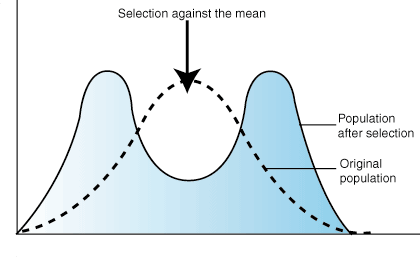
Figure 2
- Directional Selection – “In direction selection, one extreme of the trait distribution experience selection against it.” As a result of this selection, the population trait distribution shifts towards the other extreme. Considering the example of giraffe, there was the selection pressure against short necks as they were not able to reach the leaves of the trees. As a result, the distribution of length of neck was shifted in the favor of giraffes, i.e. the individuals with longer neck.
Following figure shows the effect of directional selection on trait distribution
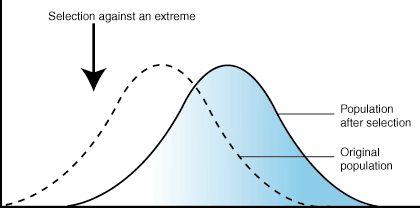
Figure 3
- Disruptive Selection – “In disruptive selection, selection pressures act against individuals in the middle of the trait distribution.” The outcome may be two peaked or bimodal. Consider an example of a plant with variable height pollinated by three different pollinators, i.e. one attracted to short plants, second attracted to medium plants and third visit only the tallest plant. If the pollinators which preferred plant height are disappeared from the area, medium height plants will be selected against the population of short and tall plants. Such a population, with several distinct forms is referred as polymorphic.
Following figure shows the effect of disruptive selection on trait distribution.
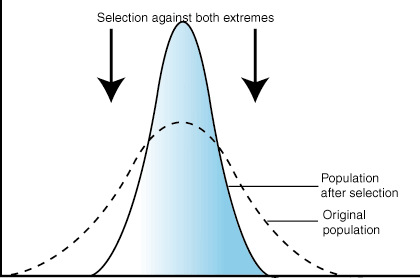
Figure 4
Darwin’s Theory of Evolution
This theory of evolution is one of the most substantiated theories in the science history because it is supported by wide variety of scientific disciplines i.e. geology, paleontology, developmental biology and genetics. The theory of evolution was first formulated by Charles Darwin in the year 1859. According to him, organisms change overtime behaviorally or physically. These changes allow the organisms to adapt to the environment such that they are able to survive and have more offspring.
The two main points of this theory are as follows –
- “All life on earth is connected and related to each other.”
- “The diversity of life is the product of modifications of population by natural selection.”
Modern understanding
Darwin was not aware of genetics, rather he observed only the pattern of evolution. After the discovery of genes, its importance, behavioral or physical traits and passing of genes were studied later. This resulted in corporation of genetics and Darwin’s theory which was termed as “Modern Evolutionary Synthesis.” According to this theory, the behavioral and physical change that occurs as a result of natural selection happens at DNA level and such changes are called mutations. Mutation can also cause random error in replication or repair of DNA due to radiation or chemical damage. In several cases, mutation can be neutral or harmful, while in some cases it also proves beneficial to the organisms.
Evolutionary Change
It is the constant process of gradual changes in physical or behavioral traits of organisms. It is the slow and continuous process. Evolutionary changes takes in following manner –
Catastrophism and Gradualism – Evolution includes change over the period of time. In catastrophism, the pattern of evolution is based on assumption that several catastrophic events separate the distinctive boundaries on fossil record. These catastrophes are floods, volcanic eruptions or droughts. This theory was proposed by George Cuvier. According to him, these catastrophic events have the local impact and thus, affect the organisms living in that specific area. Extinction of dinosaurs is considered as the result of catastrophic events.
On contrary to catastrophism, as per gradualism, changes take place continually over a long period of time. Thus, according to it, change did not occur as a result of huge event, rather it a gradual process whereby change takes place from generation to generation.
Human Evolution
“It is the evolutionary process that led to the emergence of anatomically modern humans.” The study of human evolution involves several scientific disciplines, such as primatology, anthropology, paleontology, archaeology, ethology, neurobiology, evolutionary psychology, linguistics, genetics and embryology.
Human evolution is a lengthy process and includes the change of present humans from ape like ancestors. As per the available scientific evidences, our behavioral and physical traits are originated from ape like ancestors and have gradually evolved over a period of approximately 6 million years.
Bipedalism (ability to walk on two legs) is one of the earliest defining traits which evolved 4 million years ago. Other characteristics like large and complex brain, capacity for language, ability to use and make tools, etc. were recently developed.
The process of Evolution
The process of evolution includes series of natural changes that cause species to arise, adapt to environment and become extinct. All organisms and species are the outcome of process of evolution. Evolution occurs with the change in genetic material that is inherited from parents. Here, genes represent “the segment of DNA that provide the chemical code for producing proteins.” Evolution does not change any single individual rather it changes the inherited means of growth and development. Parents pass genetic changes that are adapted to offspring and finally these changes become permanent or common throughout the population.
Frequently Asked Questions (FAQs)
Q1: Define mutation, migration and random genetic drift.
Answer: The term mutation is defined as “the spontaneous change in the gene frequency that takes place in population and occurs at low rate.”
“Migration is the local change in gene frequency when an individual moves from one population to another and then interbreeds.”
“Random genetic drift is the change that takes place from one generation to another by the process of pure chance.
Q2: How does the species evolve?
Answer: The changes in DNA takes place as it passes from one generation to another. DNA mutations sometimes affect the appearance of animals and sometimes the way in which boy works. Majority of times, the new version of gene survives better than an animal of old version and as per “survival of fittest” theory offspring adapt those changes and thus, evolution of species takes place.
Q3: What is adaptive radiation?
Answer: “In evolutionary biology, adaptive radiation is the process in which organisms diversify rapidly from an ancestral species into the multitude of new forms, particularly when a change in the environment makes new resources available, create new challenges or open new environmental niches.”

